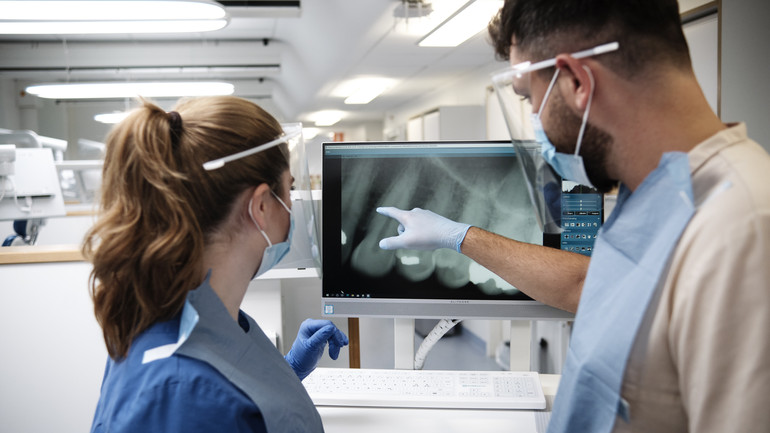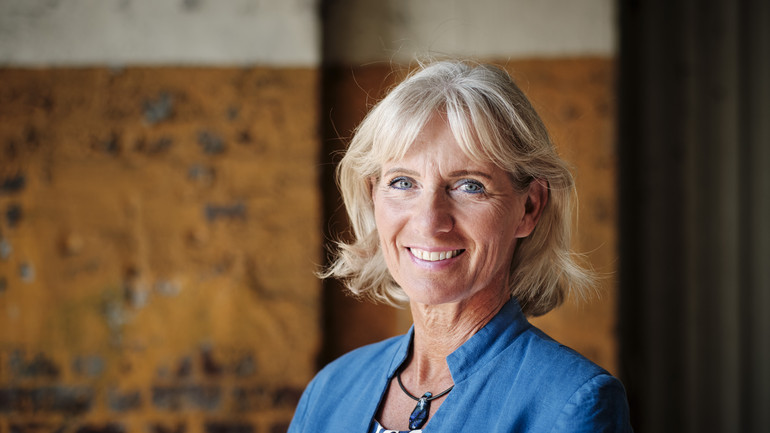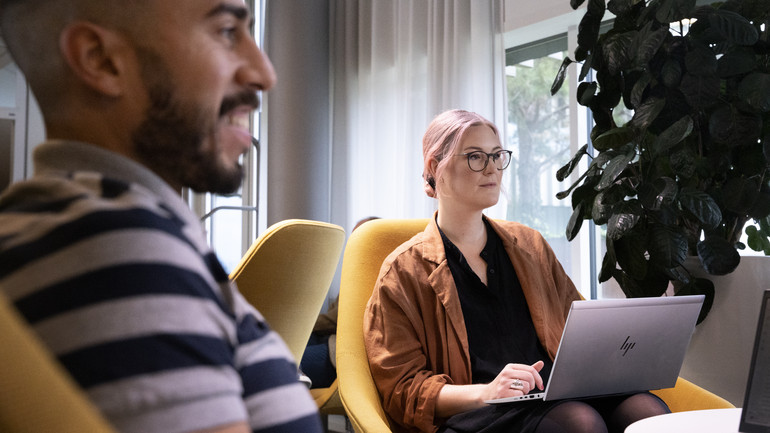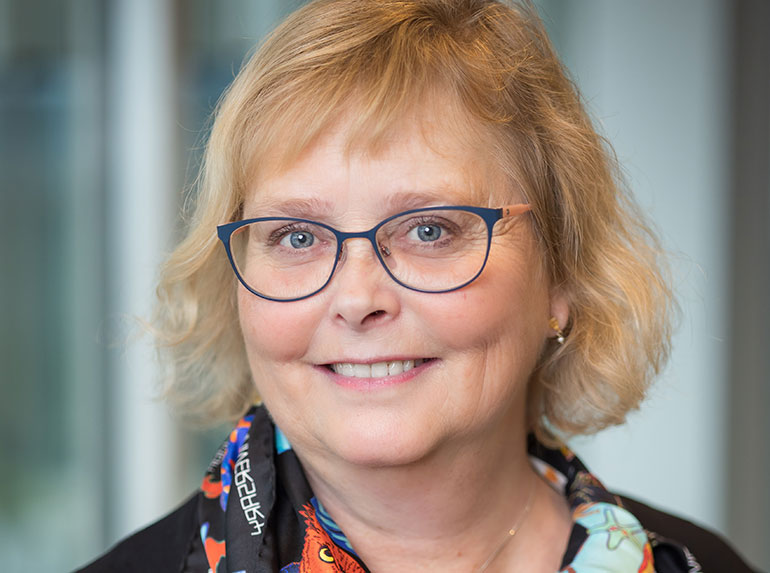We use cookies on this website. Cookies help us deliver the best experience on our website. Read about cookies.
-
- Education
- Education
- Programmes and courses
- Applications and admissions
- Tuition fees
- Scholarships
- Exchange studies at Malmö University
- Study Guidance
-
- After admission
- After admission
- Moving to Malmö
- Pre-orientation
- Arrival guide
-
- About studies at Malmö University
- About studies at Malmö University
- Why choose Malmö University
- Understanding university studies
- Connect with our students
On the page -
- Research
- Research
-
- Doctoral studies
- Doctoral studies
- Doctoral courses
-
- Doctoral schools
- Doctoral schools
- Education, Learning and Globalisation
- Doctoral school: Learning in Multicultural Societal Contexts
- ComBine
- Swedish National Graduate School in Science and Technology Education Research
- Doctoral school: Relevancing Mathematics and Science Education (RelMaS)
- Doctoral school: Sustainable Movement Education
- Finding ways in a time of great future challenges (FinnFram)
- Doctoral school: Pedagogy and Vocational Skills
- Doctoral school: Culturally Empowering Education through Language and Literature
- Research subjects
-
- Research centres
- Research centres
- Biofilms Research Centre for Biointerfaces
- Citizen Health
- Imagining and Co-Creating Futures
- Institute for Urban Research
- Malmö Institute for Migration Studies
- Literacy and Inclusive Teaching
- Centre for Work Life Studies
- Sustainable Digitalisation Research Centre
- Centre for Sexology and Sexuality Studies
-
- Research publications
- Research publications
- Search publications
- Malmö University Press
- Research events
- Participate in a research study
- Coffee Break Quiz
On the page -
- Collaboration and Innovation
- Collaboration and Innovation
-
- Areas of collaboration
- Areas of collaboration
- Muvah
- Innovation
- Collaboration with students
-
- Collaborate with researchers
- Collaborate with researchers
- Labs and facilities
- Culture collaboration
- Support Malmö University
- Alumni & Friends
On the page -
- About us
- About us
-
- Faculties and departments
- Faculties and departments
-
- Faculty of Culture and Society
- Faculty of Culture and Society
- Department of Urban Studies
- Department of Global Political Studies
- School of Arts and Communication
-
- Faculty of Education and Society
- Faculty of Education and Society
- Department of Childhood, Education and Society
- Department of Sports Sciences
- Department of Natural Science, Mathematics and Society
- Department of School Development and Leadership
- Department of Culture, Languages and Media
- Department of Society, Culture and Identity
-
- Faculty of Technology and Society
- Faculty of Technology and Society
- Department of Computer Science and Media Technology
- Department of Materials Science and Applied Mathematics
- Faculty of Odontology
- University Dental Clinic
-
- Find and contact Malmö University
- Find and contact Malmö University
- Visit Malmö University
- News and press
- Map of the buildings (Google Maps)
- Merchandise
- Whistleblowing
- Management and decision-making paths
-
- Vision, objectives and strategy 2025
- Vision, objectives and strategy 2025
- Global engagement
- Sustainability
- Widened recruitment and participation
- Quality assurance work at the University
-
- Malmö Academic Choir and Orchestra
- Malmö Academic Choir and Orchestra
- Student work – video pieces
-
- Annual Academic Celebration
- Annual Academic Celebration
- Academic traditions
- Meet our new professors
- The University in a troubled world
On the page
Research impact
We want our research to have a positive impact on society. By collaborating with other actors, we can strengthen the relevance of our research and make it more accessible. We have provided examples of societal impact cases – evidence based accounts of the profound effect our research has made – on this page.
Screening and diagnosis of orofacial pain means more people receive treatment
Up to 15 per cent of the population experience long-term pain in the jaw, face, and head. Yet these symptoms are often underdiagnosed and undertreated.
Researchers at Malmö University have, with national and international collaboration, developed a simple method for screening and diagnosing orofacial pain. Today, the method has been implemented in many parts of Sweden, meaning more people are receiving treatment for their problems.

Patients falling between the cracks
Orofacial pain and jaw dysfunction is the collective term for chronic conditions in the jaw, face, and head. Women experience these problems twice as often as men. Often, the symptoms start in puberty, and the prevalence increases rapidly among girls from the age of 13.

Patients falling between the cracks
Orofacial pain and jaw dysfunction is the collective term for chronic conditions in the jaw, face, and head. Women experience these problems twice as often as men. Often, the symptoms start in puberty, and the prevalence increases rapidly among girls from the age of 13.
Living with chronic pain can have major negative consequences for the patient, with a deteriorating quality of life, depression, and anxiety as a result. This is also very costly to our society.
Per Alstergren, Professor, Senior Consultant and Pro Dean at the Faculty of Odontology at Malmö University.

Just over half of those who experience orofacial pain have such difficult symptoms that they seek treatment. Despite this, the condition is commonly underdiagnosed and undertreated in both dental and medical care. More than 80 per cent of these patients do not receive any treatment.
We know that patients with chronic facial pain do not get the treatment they should. There is a lack of data on this issue. The natural question is then: how can we help the health system to find and treat these patients?
Birgitta Häggman Henrikson, Professor, Senior Consultant.

An effective model for identification and diagnostics
Previously there has been a lack of reliable and effective methods in general dental care for detecting and diagnosing patients with orofacial pain. But thanks to three simple screening questions and the DC/TMD diagnostic method, more patients with orofacial pain can get help. Per Alstergren and Birgitta Häggman Henrikson were both part of the research group that developed the methods.
The screening model itself is based on three questions which all patients who visit a dental practice are asked. Patients who answer "yes" to any of the questions are offered a clinical examination using DC/TMD and asked to fill out a questionnaire. After the examination and when the questionnaires have been analysed, diagnoses are made and the patient receives a treatment plan.
The first version of DC/TMD was developed by an international consortium over many years and was published in 2014. Several researchers from the Faculty of Odontology at Malmö University contributed to that work. They then developed a short version of DC/TMD – a simple and reliable model for diagnostics that could work in real life.
Since 2019, DC/TMD is an approved diagnostic methodology in the National Board of Health and Welfare's new national guidelines for dental care. Malin Ernberg, Professor in orofacial pain and jaw function at Karolinska Institutet, is part of the research group that updates the guidelines.
“For a long time there’s been a gap, with dentists' medical records focusing on cavities or periodontology, but nothing about pain. No questions have been asked about these issues, which means it has gone unnoticed. If there are no questions in the medical records, you tend not to consider it, unless the patient addresses it themselves,” she says.
The biggest advantage of DC/TMD is that it is easy and quick. The method itself is also simple. You don’t need to do the specialist version of DC/TMD, but can manage timewise with the short version, which is enough to assess the patient’s needs and provide adequate diagnostics and treatment
Malin Ernberg, Professor in orofacial pain and jaw function at Karolinska Institutet.
Collaboration with healthcare means more patients receive support
DC/TDM has been developed and implemented in collaboration with interest groups, authorities, regions and care providers. Between 2018 and 2020, a major implementation and evaluation project was carried out in Sweden’s Västra Götaland region for all staff in general dental care. During the implementation, the short version of DC/TMD was also tested.
“In our experience, we haven’t reached these patients before, as they don’t always think that dental care is the right place for them to get help. It is a tricky group to identify, as they sit in many different waiting rooms – in primary care, for example, or neurology – when they should be in dental care,” says Ann-Charlotte Sundelin, Director of Public Dental Care in the Västra Götaland region.
We chose to implement DC / TMD for two reasons: we really wanted to help these patients and we were attracted by the simplicity of the method itself, as we could implement it in a way that worked well for the business.
Ann-Charlotte Sundelin, Director of Public Dental Care in the Västra Götaland region.
The impact of screening and DC/TMD has been profound and today permeates dental care at all levels in Sweden. Since 2010, the screening questions have been used in a large number of public dental care organisations. Significantly more patients have therefore been correctly identified and diagnosed. A five-year follow-up carried out in the Västerbotten Region showed a sharp increase in care among patients with orofacial pain.
The implementation effort in Västra Götaland also resulted in a significant increase in patient care. The proportion of patients over the age of 12 who were examined increased by 46 percent and the number of patients who received treatment increased by 31 percent after the training.
Training leads to increased competence in healthcare
There are currently six training centres in the world for DC/TMD diagnostics. Malmö University's training centre has established the other five, and the method has been translated into more than 20 languages. The research group has also completed additional training in DC/TMD on several occasions for regional employees and private dental care providers. The training has led to increased knowledge about orofacial pain in general dental care and an improved ability to identify and diagnose these patients.
Today, DC/TMD is included in the undergraduate teaching at all four Swedish universities that provide dental training. All newly-graduated dentists therefore contribute with new skills to general dental care.
“It is a really positive thing, and important for the future, that these screening and diagnostics methods are now included as part of undergraduate training. It lays a very good foundation for the future,” says Birgitta Häggman Henrikson.
Per Alstergren concludes: “Now we can begin to see the results of many years of development and collaboration with national and international research groups, care providers and other organizations. More patients have received adequate treatment and avoided chronic pain.”
Cronic face- and jaw pain
Choose English captions after pressing play.
Better conditions for measuring workplace risk and health factors
Work-related stress is a major public health problem, and in order to improve the psychosocial work environment, working methods and measuring instruments are needed. Therefore, researchers at Malmö University have further developed and validated the international measurement tool, COPSOQ. In the new version, the work environment in Swedish workplaces can be compared with national benchmarks.

"You can make the correct action at the right level"
Today, problems related to the organisational and social work environment are the most common cause of work-related ill health. Around half of the employees in Sweden feel that they have too much to do and that they have difficulty stopping thinking about work in their free time. Social workers are...

"You can make the correct action at the right level"
Today, problems related to the organisational and social work environment are the most common cause of work-related ill health. Around half of the employees in Sweden feel that they have too much to do and that they have difficulty stopping thinking about work in their free time. Social workers are one of the occupational groups that have long been concerned about an unsustainable work situation.
We knew the workload was high and we knew it was a stressful situation, but COPSOQ gave us different language and concepts and an opportunity to sort through this pressing issue – workload was found to be a big part of the problem. The survey could then figure out what it was all about; is it quantitative with many demands, or is it about it being emotional demands?
Hanna Ljungberg, former chief safety representative for the Academic Association SSR.
COPSOQ is an internationally recognised work environment tool used for workplace surveys with risk and health assessments of the social and organisational work environment. It was in her union role at the city of Malmö that Hanna Ljungberg first came into contact with the measuring tool.
In 2015, after the Swedish Work Environment Authority examined the social workers’ psychosocial work environment in the Malmö municipality, demands were made that the municipality of Malmö carry out an in-depth investigation of the staff's situation. This resulted in a collaboration between Malmö University and the municipality. Within the framework of the research project, two COPSOQ measurements were made of the working environment for the social workers.
“I experienced COPSOQ as a very good strategic and operational tool. We got an organisational overview and could see where there were problems and where there weren’t; If the problems spanned the entire organisation, or only concerned a certain department. You can make the right effort at the right level and follow up on the efforts that have been made,” says Hanna Ljungberg.
COPSOQ – a bridge between science and practice
Hanne Berthelsen is an associate professor of organisation and leadership at Malmö University and was responsible for the research project in which the municipality of Malmö was included. In recent years, her research group has led the work of further developing and validating COPSOQ for practical use in the Swedish labour market.
One may think that it is easy to ask questions to employees about the work environment, but the fact is that it is very difficult, not least about relationships and how the work is organised. We need to ask the right questions to get the answers that are relevant to act on
Hanne Berthelsen, Associate Professor of Organisation and Leadership at Malmö University.

For the latest version of the tool, COPSOQ III, the researchers have produced benchmarks for the Swedish labour market. It makes it possible to compare individual occupational groups or work groups in one's own workplace against the general population – a key to being able to interpret the results and draw conclusions about how risks in the work environment can be prevented.
“COPSOQ has an incredible potential. Here is the opportunity to use research-based knowledge to understand more about, for example, health, motivation and sick leave in the workplace. The work environment work can actually be part of a strategic development work, which leads to better performance, less sick leave and lower staff turnover,” says Hanne Berthelsen.”
Free web platform with 100,000 visits annually
In 2015, the interactive web platform www.copsoq.se was launched. The purpose of the platform is to make COPSOQ available, including benchmarks, guidelines for use and underlying research, to practitioners. The platform is free of charge and offers all the information needed for planning, implementation and interpretation of the results of a COPSOQ survey. Since the launch, the number of users has increased steadily on the site and is now around 100,000 visits annually.
Johan Månsson Rosén is one of those who use the platform regularly in his role as a work environment engineer in the city of Malmö, among other things in a training effort for managers in the service administration.
“The good thing about COPSOQ is that it is easier to find the root causes of the risks. Stress is due to many different factors, not just workload. The material helps one to put words to risk and health factors and the group can then more easily identify what they need to focus on in their future work environment efforts. It increases the probability that you work with the right things to create a good working environment,” he says.
In the development work of COPSOQ, the research group has collaborated with a large number of other key players from the public, private and idea-driven sectors, such as Avonova, Sweden's third largest occupational health service provider. In 2021, a strategic collaboration was also initiated with the Health Profile Institute, (HPI), which is a provider of services to, among others, Swedish occupational health care companies. HMC, Hälsomedicinskt Centrum – Företagshälsa, is one of the health service provider companies that has chosen to use COPSOQ when its customers request work environment assessments.
I think it feels great that we have chosen this tool, not least because it has such a strong research connection. You get a solid screening of the social and organisational issues in the workplace.
Ulrika Elgefors, psychotherapist and organisational consultant at HMC.
What reactions have you received from your customers when they see the COPSOQ result?
“Most people have a pretty good idea of their own organisation, but they have not always had a structured picture in the way it is presented in the survey. Many people need to see it in black and white, see numbers and comparative figures. It also puts a little more pressure on the fact that you actually need to do something,” says Ulrika Elgefors.
The Impact on academia has a ripple effect
In recent years, the research group at Malmö University has been involved in a large number of activities to spread knowledge about COPSOQ among key players in organisational and social work environments. The interest and impact has so far been great; in 2021, the Swedish validation study for COPSOQ II was one of the 10 per cent most cited articles published in PLOS One 2018.
In three reports from the Swedish Agency for Safety and Health at Work, and in a report from the Institute for Stress Medicine, COPSOQ is mentioned as a relevant tool for evaluating social risks and health-promoting factors. Today, research on COPSOQ is also taught in Swedish university programmes, including the psychology programme at Stockholm University.
“It is very gratifying to see that the use of our research is spreading like wildfire. At the same time, we look forward to what our new collaborations can bring,” says Hanne Berthelsen.
Film Copsoq
Choose English captions after pressing play.
